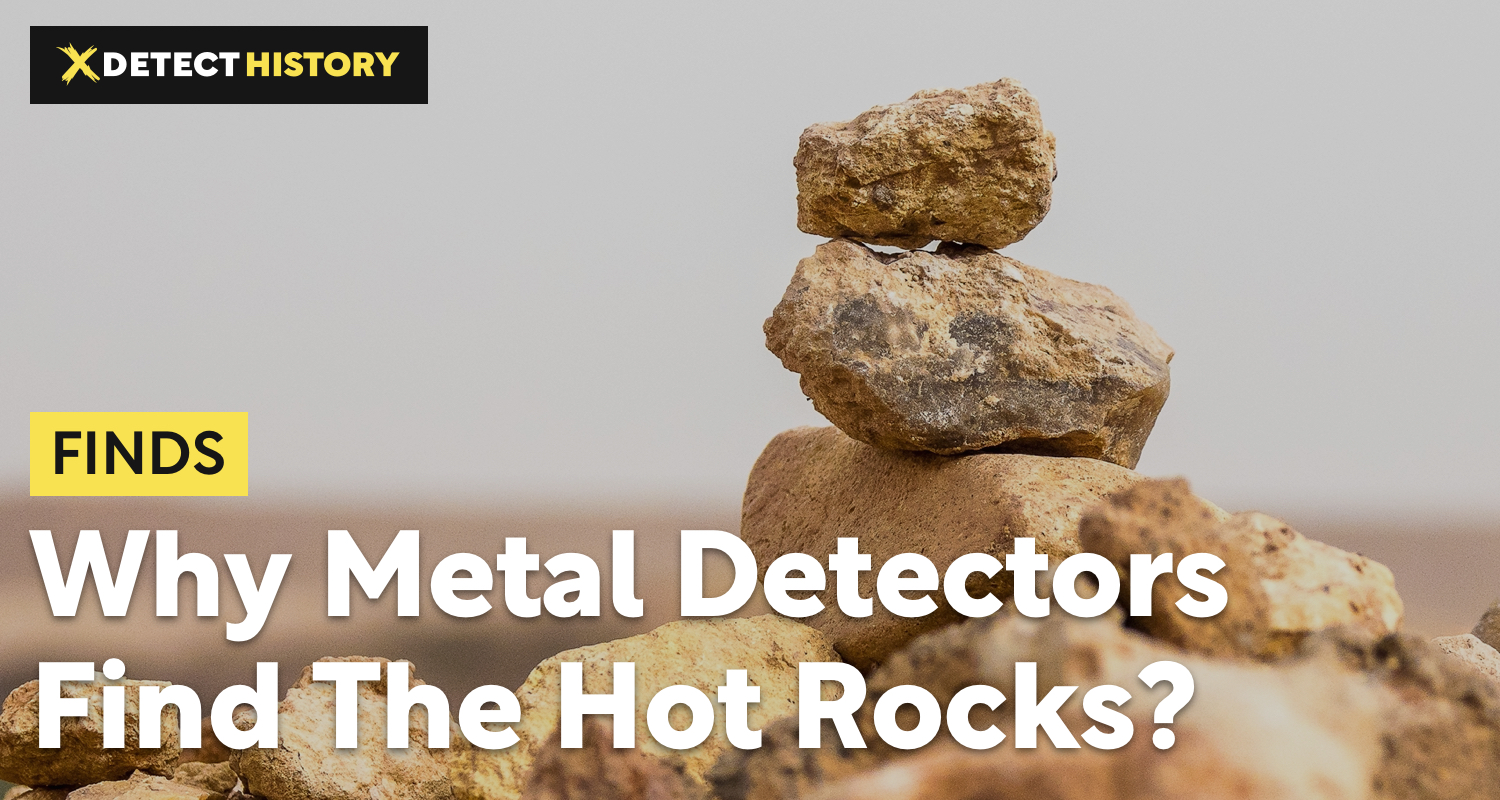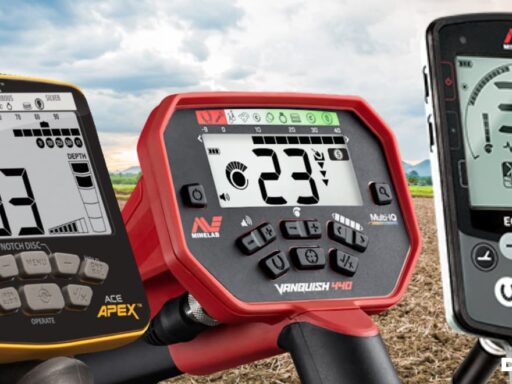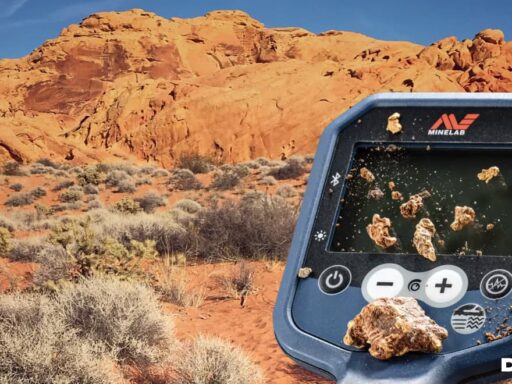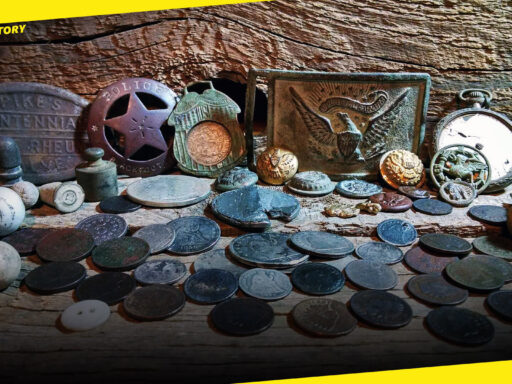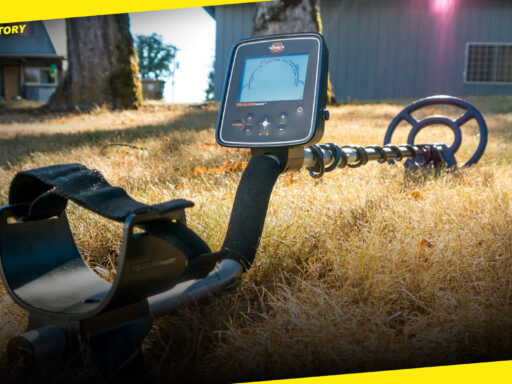Hot rocks are rocks that contain different amounts of minerals, but the main point is that these rocks are either higher or lower mineralized than the rest of the soils around them. As a result, hot rocks interfere with the homogeneous response of the soils to the electromagnetic field created by the metal detector, reacting to it in a different way. This different reaction on the background of a more homogenous response often looks like a potential find to a metal detector, and the machine starts giving false signals, making the detectorist to dig out stones.
Hot rocks are usually referred to as a trouble during hot rocks metal detecting activity, and to deal with them, additional features in a metal detector are required. However, the good news about hot rocks is that valuable finds are not infrequent in soils with hot rocks. Check out this post to find out more.
Types of Hot Rocks
The percent of minerals and the chemical composition of the hot rocks differs, but due to a clear difference in mineralization of the rocks and soils around them, most metal detectors will spor the “untypical” rock. There are two main metal detecting types of hot rocks, called hot rocks and cold rocks.
Negative Rocks
Negative hot rocks are also often referred to as cold rocks. Negative hot rocks contain more nonconductive materials in them. They usually contain lots of Iron Oxide Fe3O4 which makes them very nonconductive, and this lack of conductivity glares against the background of more conductive soils when hit by the electromagnetic field created by the metal detector. Many cold rocks can be found in areas where black sand is typical; both black sand and cold rocks contain lots of Iron Oxide which makes them black in color.
Most cold rocks are small in size, at least those closer to the surface. Bigger rocks are deeper, and usually create more problems when causing false response in the metal detector. Some meteorites are also rich in Iron Oxide Fe3O4.
Positive Rocks
Positive rocks are actually hot rocks, because they are highly conductive, most often due to impressive quantities of Maghemite. Maghemite is also Iron Oxide, but this time Fe2O3. This Iron Oxide makes the rocks reddish, orange, or yellowish in color. Moreover, besides Iron Oxide Fe2O3, positive rocks often contain lots of sulfide minerals which are also highly conductive.
However, other rocks can also act as positive hot rocks if they contain no iron, but feature such metals as copper, aluminum, gold, or nickel. This is a tricky task to tell a potentially valuable non-ferrous positive hot rock from non-valuable. Many positive hot rocks sound as valuable targets when metal detecting hot rocks, and even smaller samples are well-detected on some impressive depth.
How To Neutralize Hot Rocks Interference
There are different methods to understand that the signal is given by a negative or positive hot rock, and to neutralize the interference created by hot rocks when metal detecting. The exact scheme of actions depends on the signals given by the metal detector is every specific case, on the metal detector used, and on the detectorist’s experience. However, here are some generalized tips to avoid false signals from hot rocks:
- negative hot rocks often give a delay in response and recovery speed
- most negative hot rocks only give signals when the search coil is moved in one direction
- negative hot rocks often give no response to pinpointers, or give a pulsating signal when pinpointed
- most often, Automatic Ground balance for highly mineralized soils is used in a metal detector to neutralize the effect of cold rocks
- the best coil shape and configuration to deal with the hot rocks is elliptic DD coil
- if the sensitivity level can be manually tuned, try decreasing it a bit for greater depth of reach
- moving the search coil a bit higher above the highly mineralized soils with hot rocks; this method will reduce the depth of reach, but also the impact of the cold rocks
- for both positive and negative hot rocks, smaller search coils work best; consider 5-6 inches coils for maximum efficiency
- make sure you have high recovery speed tuned for your metal detector
- try Notch Discrimination if conventional Discrimination feature does not help much
- positive hot rocks can be recognized visually due to their reddish-yellowish color; if you have already hit several hot rocks on the surface and they look similar, you can recognize one if the detector gives you a false signal again
Best Metal Detectors To Detect on Hot Rocks
Metal detecting on highly mineralized soils, or underwater in salt water bodies, is complicated due to the soils chemical composition; moreover, highly mineralized soils are often associated with rough terrains hard for both metal detectors and operators. This is why metal detectors with specific functions and features are needed to search effectively in such conditions. Some of the best metal detectors for hot rocks include due to Ground balance, Discrimination, and other features.
Valuables That Can Be Found on Hot Rocks
Both positive and negative hot rocks are seen as difficult by most metal detectorists, because these rocks create electromagnetic interference and prevent productive search. While hot rocks can be found in many places, and those looking for coins, relics, or specific objects will be annoyed by them, gold prospectors, meteorite hunters and gemstone hunters love hot rocks.
The point is, negative hot rocks and black sands are typical for gold-bearing regions. Such soils are rich in Iron Oxide and gold is often found nearby. Gemstones and semi-precious stones deposits are also typical for such areas. Non-ferrous hot rocks, on the other hand, can themselves be valuable, containing copper or gold. Moreover, meteorites are also hot rocks; if you spot one, it can cost more than gold, so you can make some money selling hot rocks metal detecting.
What is Hot Rocks Metal Detecting?
Hot rocks metal detecting meaning is that for many treasure hunters, hot rocks are not a problem, but a potentially valuable target. What are hot rocks metal detecting? This is detecting stones that can potentially turn out gold bearing, copper bearing, or even a meteorite, or spotting the gold-bearing or gemstone ground by the indirect indicator of the hot rocks.

